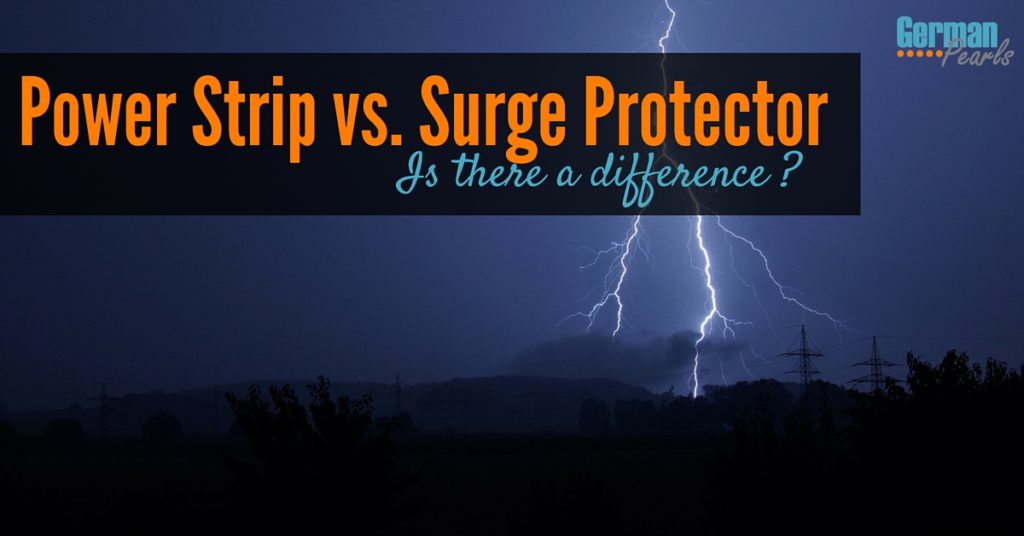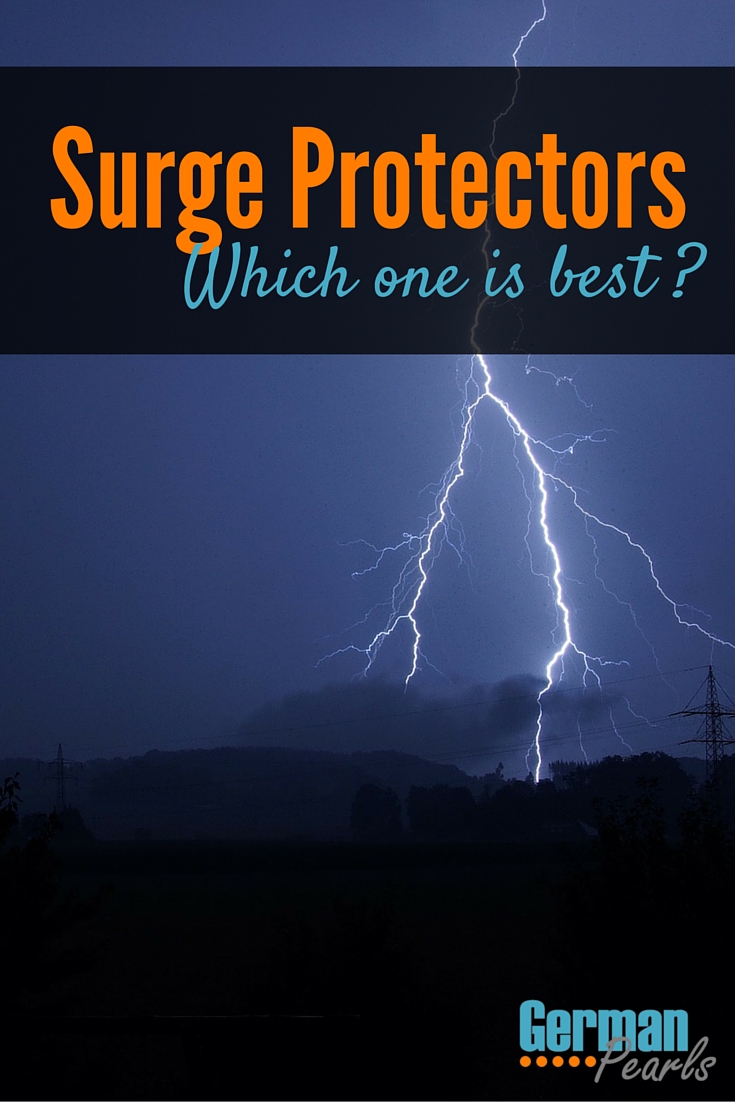Is there a difference between a power strip and surge protector? When you’re running out of outlets and need to add more the choices in devices can be confusing. Power strip, surge protector, surge suppressor, joules, what do they all mean? I never used to pay attention to it and just purchase a cheap power strip, I’m frugal after all. Well, I should have paid more attention because that cheap device cost me much more in the long run.

Note: This post may contain affiliate links.
A few years ago we had a fire in our house. And, boy, was it scary!
We have a small water pump that feeds water to an outdoor faucet from a well point. It was a hot August day and we were trying to fill a pool for our little ones from the outdoor faucet. No water. Hmm. When we went to investigate we found the water pump breaker had tripped. Ok, that’s an easy fix, right? Just reset the breaker. After doing that, the pump attempted to start again and then everything went crazy! (I should have known if the breaker tripped something was wrong.)
Lights were getting bright, then dim, then bright again. Appliances were beeping. The house was possessed! After a few scary minutes the smoke detectors started beeping and smoke began filling the house. Where was the smoke coming from? Then, I caught a glimpse of a fire in the heater vent. We all got out but not before my husband turned off the main power to the house – smart move!
The power lines to our house run underground. We discovered that the ground line had been cut somehow. It was slowly deteriorating. On the day of the fire it finally failed causing a massive power surge to flow through the house’s electrical system.
So what caused the fire? You may have already guessed it – the power strips. The two fires that started were from power strips (not surge protectors) that we had. They couldn’t handle the power surge, began to melt and started burning on the carpet. One happened to be by a cold air return, sucking the fire into the air ducts.
Is There a Difference Between a Power Strip and Surge Protector?
So why tell this story? Well, sometimes being frugal doesn’t pay. When we needed more outlets for our computer equipment or our TV system I probably went to the store and purchased a cheap power strip. They’re all the same, right? Wrong.
There is a difference between a power strip and surge protector. A power strip is simply a bunch of outlets all connected together. A surge protector is “smarter” device.
What Does Surge Protector Mean?
So, what’s the difference between a power strip and surge protector? According to Wikipedia a surge protector is:
an appliance or device designed to protect electrical devices from voltage spike.
So, a surge protector (sometimes called a surge suppressor) can protect your devices from a power surge by “absorbing” the extra voltage. A regular power strip does not protect your devices from a surge. It allows the extra energy to pass through to your devices. In addition, the components of the power strip aren’t designed for the extra voltage and can cause a fire, as happened in our case.
What Causes a Power Surge?
In our case a failed ground line caused a power surge through our house. Some other things that can cause a power surge in your home include:
- lightning
- power outages
- incidents at an electrical power plant or station
- on/off cycling of electrical items
What Kind of Surge Protector Do You Need?
Surge protectors provide varying degrees of protection. The amount of protection it can provide is noted in joules. A joule is a measure of energy. So, the higher the joule rating of a surge suppressor, the more energy it can “absorb” or the greater the amount of protection.
So, a surge protector with a 790 joule rating like this one provides almost four times the protection of a surge protector with a 200 joule rating, like this one. That means the one with the 790 joule rating could handle four power surges of the same size or a power surge four times as strong as the one with the 200 joule rating.
Which Surge Protector Should I Buy?
The answer to this question depends on several things. Here are our recommendations and advice.
- If you need extra outlets I highly recommend purchasing a surge protector, not a power strip.
- If you’ll be using the surge protector to power inexpensive items then you can save some money and purchase a surge protector with a lower joule rating, like this one.
- For extra outlets in the bathroom or kitchen I use a swivel surge protector like this one.(This protector would work great with the DIY charging station organizer I built.)
- If you need a surge protector for expensive items like a computer or TV I recommend a surge protector with a higher joule rating. That way your devices are less likely to be “fried” by a power surge. For this application a surge suppressor like this one. It also has the added benefit of having a plugs for coaxial and Ethernet cables.
- If you’d like a surge protector to charge your mobile devices on the go then a portable protector like this one is an excellent choice.
Conclusion
When it comes to getting additional outlets in your home not all options are the same. There is a difference between a power strip and surge protector. A surge protector will protect your home and devices from accidental power surges. For more protection choose a surge protector with a higher joule rating.

One of my biggest fears is a fire. Your story makes me want to check and ensure that we have all surge protectors and not just power strips now. Thank you for sharing your experience, I believe it is always important to do so.
Laurie,
It is good to check. Though our fire could have been so much worse it was so terrifying at the time! As with many things…better safe than sorry! 🙂
Amy